Hi Everyone,

Welcome to the Economics Challenge Series for 2023. For the months of July and August, I am running an economics challenge series. The series consists of seven challenges. All seven challenges will commence in July and the results will be published and announced in August. Four of the seven challenges are returning from last year’s Challenge Series. Two are from the monthly contest series and one challenge is completely new. Below are the list of challenges.
- Challenge 1: Buying and Selling Game
- Challenge 2: Pick-a-Door
- Challenge 3: Complements and Substitutes
- Challenge 4: Buying and Selling Game (Business Version)
- Challenge 5: Ice Cream Game
- Challenge 6: Game Theory Game
- Challenge 7: Even-to-Win
Each challenge could reward winners with as much as 60 Hive Power. The value of the prize will depend on the level of participation. For each new participant, the prize will increase by 5 Hive Power. This will continue until 60 Hive Power is reached (12 participants). The first 12 participants will also receive a 50% upvote from this account. In addition to the prize money, the top few participants will be given points. These points will be used to determine the overall challenge series winner. This winner may receive as much as 80 Hive Power. The value of the prize will equal the sum of the number of participants across all challenges. This will continue until 80 Hive Power is reached.
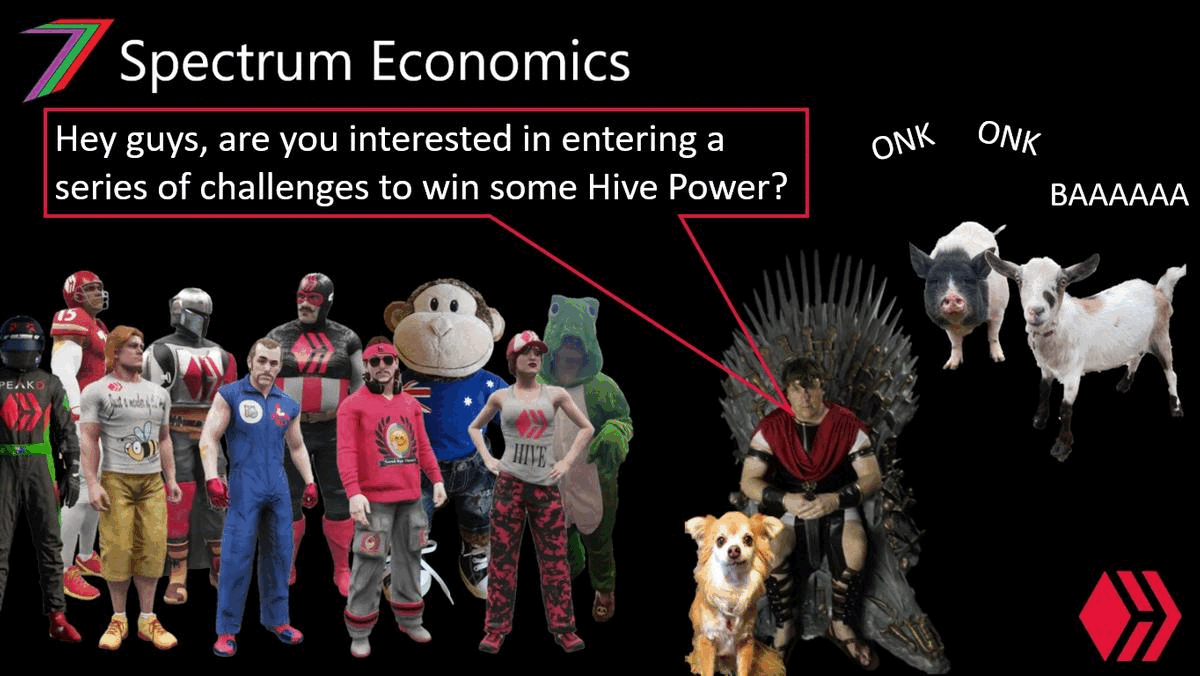
For more information on the challenge series and the upcoming challenges, I recommend that you read my post Economics Challenge Series 2023 (Coming Soon).
Welcome to Challenge 4: Buying and Selling Game (Business Version)
Until this year, the Buying and Selling Game (Business Version) and the original version of the game were alternated on a monthly basis. To become more familiar with this contest/challenge as well as how the results are generated, I recommend taking a look at the links below.
- Buying and Selling Game Contest #32 (Business Version) – 30 Hive to be won
- Buying and Selling Game Contest 32 Results
- Buying and Selling Game Contest #30 (Business Version) – 30 Hive to be won
- Buying and Selling Game Contest 30 Results
- Buying and Selling Game Contest #28 – 30 Hive to be won
- Buying and Selling Game Contest 28 Results
If you want even more information, the game is introduced in my post/video 'Buying and Selling Game (Business Version) Explanation Video'.
How to play?
The ‘Buying and Selling’ Game (Business Version) involves two simple steps.
- Choose the quantity of each good you want to buy or make.
- Choose the selling price of each good you bought or made.
All the information you need to know to play the game is provided in the question; i.e. no external research is required as all costs and demand estimates are hypothetical.
All entries must be made in the comments section of this post.
Each account is only permitted one entry.
Objectives of the game
The objective of the game is to make the highest profit from the sale of the goods you have bought or made. If two participants make the exact same profit, the participant that entered first wins.
Game assumptions
Each good has 100 potential customers. Each customer can buy up to 6 items of a particular good if he or she values the goods above the selling price (i.e. has a willingness-to-pay higher than the selling price). Each customer is only interested in one type of good. Therefore, selling more types of goods increases the potential number of customers. For examples selling three types of goods grants access to 300 potential customers.
Demand for the goods for each customer is determined using triangle distributions. The question provides the minimum, maximum, and mode willingness-to-pay for each good. Demand is further adjusted for diminishing marginal utility using a fixed percentage adjustment. The demand curve is the summation of demand of all potential customers. See example of triangle distribution below. A sample demand curve is shown later in the post.
Triangle Distribution
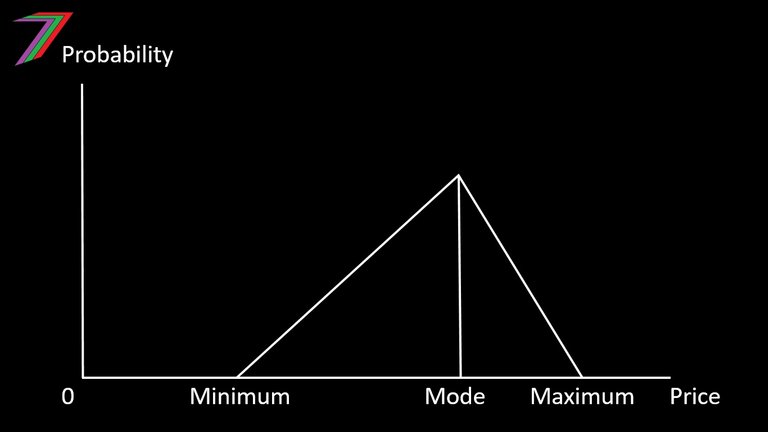
Each customer has diminishing utility (diminishing willingness-to-pay as more goods are bought) for each good. For example, a customer may have a willingness-to-pay of $1.00 for the first item, $0.80 for the second item, $0.60 for the third item, $0.40 for the fourth item, $0.20 for the fifth item, and $0.00 for the sixth item. The question will state this diminishing utility as 20% (i.e. 0.2/1 = 20%), which is applied linearly. If a participant prices the good at $0.50, the customer will buy three items, as the customer values the fourth item below $0.50 (i.e. $0.40).
The business will have overhead costs, which need to be deducted from the budget before goods can be bought. There are zero transaction and transport costs.
If some goods remain unsold, they will be treated as being wasted, which is equivalent to being sold for $0. This could occur if a participant prices a good too high.
What information is provided?
- All the goods that can be bought in the game are provided.
- All costs (i.e. costs to buy/make goods and overhead costs) are provided.
- Any special purchasing requirements are provided. For example, a good may need to be bought in fixed quantities.
How are the results of the game determined?
A Microsoft Excel Model is used to determine the demand of each good. The costs, quantities bought, quantities sold, and prices will be used to calculate the profits made by each participant. In the results post, the calculation of the demand and profits will be presented in a video.
Challenge Prizes
The total prize for this challenge could reach as high as 60 Hive Power. The number of participants determines the value of the prize. For every entry, the prize is increased by 5 Hive Power until a value of 60 Hive Power is reached. The winner will receive 2/3 of the prize and second place will receive 1/3. The first 12 entries will be given upvotes. The winner of this challenge will be given 25 points, second place 10 points, and third place 5 points. These points will be tallied at the end of the challenge series to determine the overall winner. An additional 5 Hive Power and 5 points can be won if the winning participant obtains a higher or equivalent profit to the model’s built in estimator.
Let the challenge begin
For this challenge, participants will be running a gardening tools business. Participants will be able to sell three types of gardening tools.
- Shovel
- Spade
- Rake
The participants will only be able to purchase shovels, spades, and rakes in batches of 5. The costs of purchasing each batch, the average cost per gardening tool and daily overheads are provided in the tables below.
Cost Information
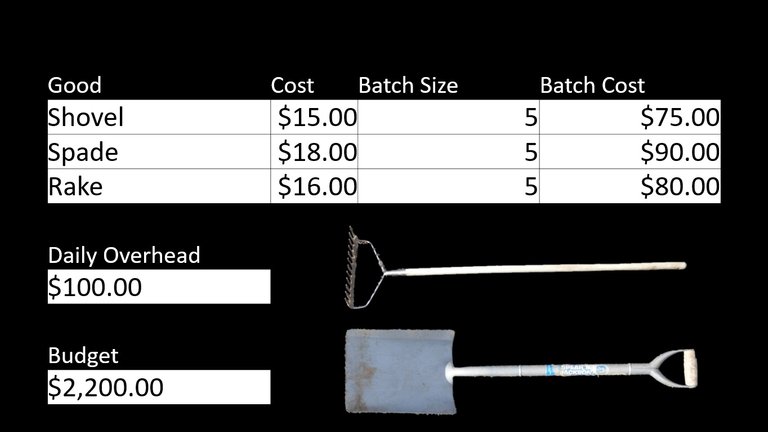
Note: Budget includes Daily Overhead. If the budget is $2,200 and the daily overhead is $100, there is $2,100 remaining to purchase gardening tools.
The parameters to determine demand are provided in the table and graphs below.
Demand Information
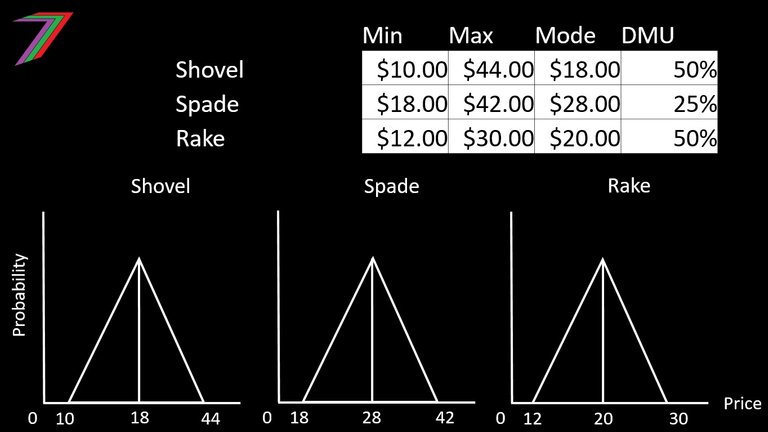
Note: The graphs for the triangle distribution are based on the minimum, maximum, and mode prices for the gardening tools a customer buys. The demand curve is adjusted to include diminishing utility expressed in the last column of the table. This will increase the elasticity of demand.
It has been assumed each type of gardening tools has 100 potential customers. Each customer will potentially buy a maximum of 6 gardening tools of a particular type. Therefore, it is possible a maximum of 600 of each gardening tool could be sold. The Figure below contains a sample of a possible demand curve that could be generated by the model using the parameters described in this question.
Possible Demand Curve
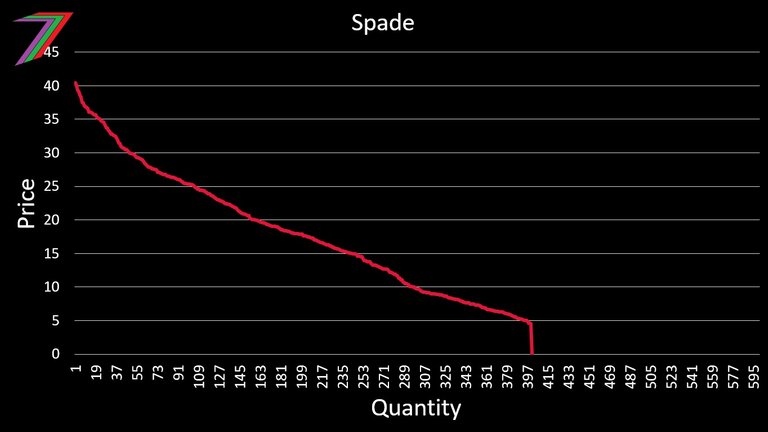
Note: This is a sample demand curve for spades. The actual demand curve will be determined in the results post.
Entry format
For this challenge, I expect to see entries made in the following format:
Shovels
Quantity: XXX Selling Price: XXX
Spades
Quantity: XXX Selling Price: XXX
Rakes
Quantity: XXX Selling Price: XXX
Example:
Shovels
Quantity: 40 Selling Price: $22
Spades
Quantity: 60 Selling Price: $25
Rakes
Quantity: 20 Selling Price: $30
The closing date and time for this challenge is 6PM coordinated universal time (UTC) 23/07/2023. Responses after this time will not be accepted. The answers will be provided in the results post along with the video containing the generation of demand and profits using the model.
I hope everyone has fun and enjoys this fourth challenge. If you have any questions, feel free to ask in the comments section. I look forward to your participation in the next challenge. It will be available in a few days.
More posts

I have several collection of posts. I have organised these collections based on content and purpose.
The first collection contains six collection posts created before PeakD had the collection feature. Four of these posts relate to the core of my content, one of them contains all my Actifit Posts, and one of the them contains my video course ‘Economics is Everyone’.

The second collection consists of the posts that I consider define my channel. These posts are significant in terms of content as well as how they contribute to the growth of the channel. These posts reveal the most about what I believe in.

The third and fourth collection is what I call my ‘Freedom-base Economics living book’. They contain all the posts that support my ideas about the value and power of freedom. Some of these posts explain what we can achieve with freedom and what we need to utilise it. Some of them explain how we are deprived of freedom and how we often give up freedom for security and comfort. The third collection concludes with possible scenarios depending on what we (society) choose to do.


Hive: Future of Social Media

Spectrumecons on the Hive blockchain
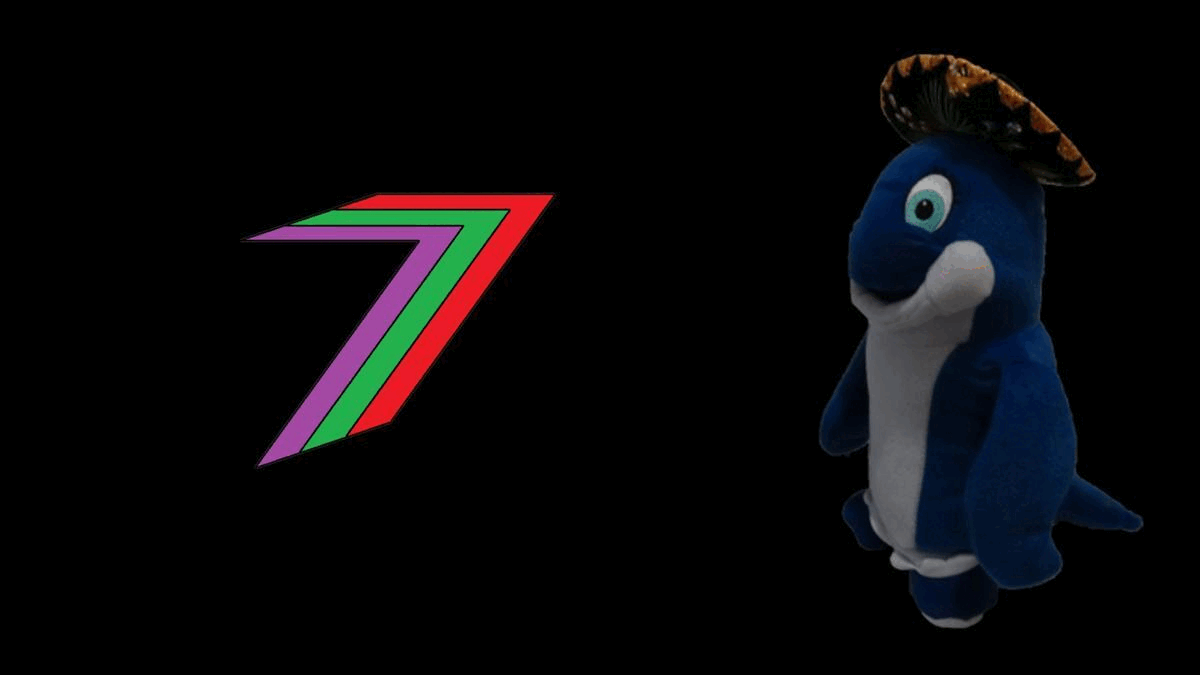
Shovels
Quantity: 25 Selling Price: $24
Spades
Quantity: 80 Selling Price: $22
Rakes
Quantity: 14 Selling Price: $26
Shovels Quantity: 25 Selling Price: $30 Spades Quantity: 40 Selling Price: $60 Rakes Quantity: 25 Selling Price: $20
Shovels
Quantity: 40 Selling Price: $35
Spades
Quantity: 40 Selling Price: $45
Rakes
Quantity: 40 Selling Price: $20
Shovels
Quantity: 45 Selling Price: $28
Spades
Quantity: 40 Selling Price: $32
Rakes
Quantity: 35 Selling Price: $23
Shovels
Quantity: 50 Selling Price: $25
Spades
Quantity: 65 Selling Price: $30
Rakes
Quantity: 15 Selling Price: $45
Shovels
Quantity: 30 Selling Price: $30
Spades
Quantity: 50 Selling Price: $40
Rakes
Quantity: 20 Selling Price: $25
Shovels
Quantity: 40 Selling Price $30
Spades
Quantity: 60 Selling Price $35
Rakes
Quantity: 10 Selling Price $25
Shovels
Quantity: 50 Selling Price: $20
Spades
Quantity: 40 Selling Price: $30
Rakes
Quantity: 30 Selling Price: $25
Shovels Quantity: 38 Selling Price: $45
Spades Quantity: 50 Selling Price: $60
Rakes Quantity: 25 Selling Price: $26
Shovels
Quantity: 28 Selling Price: $25
Spades
Quantity: 45 Selling Price: $40
Rakes
Quantity: 25 Selling Price: $20
Shovels
Quantity: 20 Selling Price: $22
Spades
Quantity: 90 Selling Price: $28
Rakes
Quantity: 10 Selling Price: $28
Shovels
Quantity: 40 Selling Price: $30
Spades
Quantity: 60 Selling Price: $34
Rakes
Quantity: 25 Selling Price: $24
Shovels
Quantity: 45 Selling Price: $28
Spades
Quantity: 40 Selling Price: $32
Rakes
Quantity: 40 Selling Price: $23.50
Shovels
Quantity: 30 Selling Price: $25
Spades
Quantity: 45 Selling Price: $40
Rakes
Quantity: 50 Selling Price: $20.00
Shovels
Quantity: 35 Selling Price: $27
Spades
Quantity: 65 Selling Price: $27
Rakes
Quantity: 25 Selling Price: $24
Shovels
Quantity: 40 Selling Price: $25
Spades
Quantity: 60 Selling Price: $28
Rakes
Quantity: 25 Selling Price: $24
Shovels
Quantity: 35 Selling Price: $27
Spades
Quantity: 60 Selling Price: $28
Rakes
Quantity: 30 Selling Price: $23
Shovels
Quantity: 60 Selling Price: $28
Spades
Quantity: 40 Selling Price: $30
Rakes
Quantity: 30 Selling Price: $24